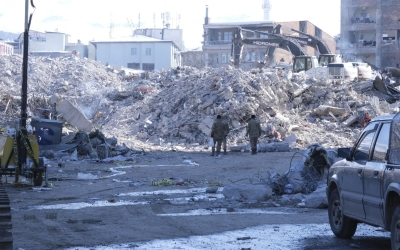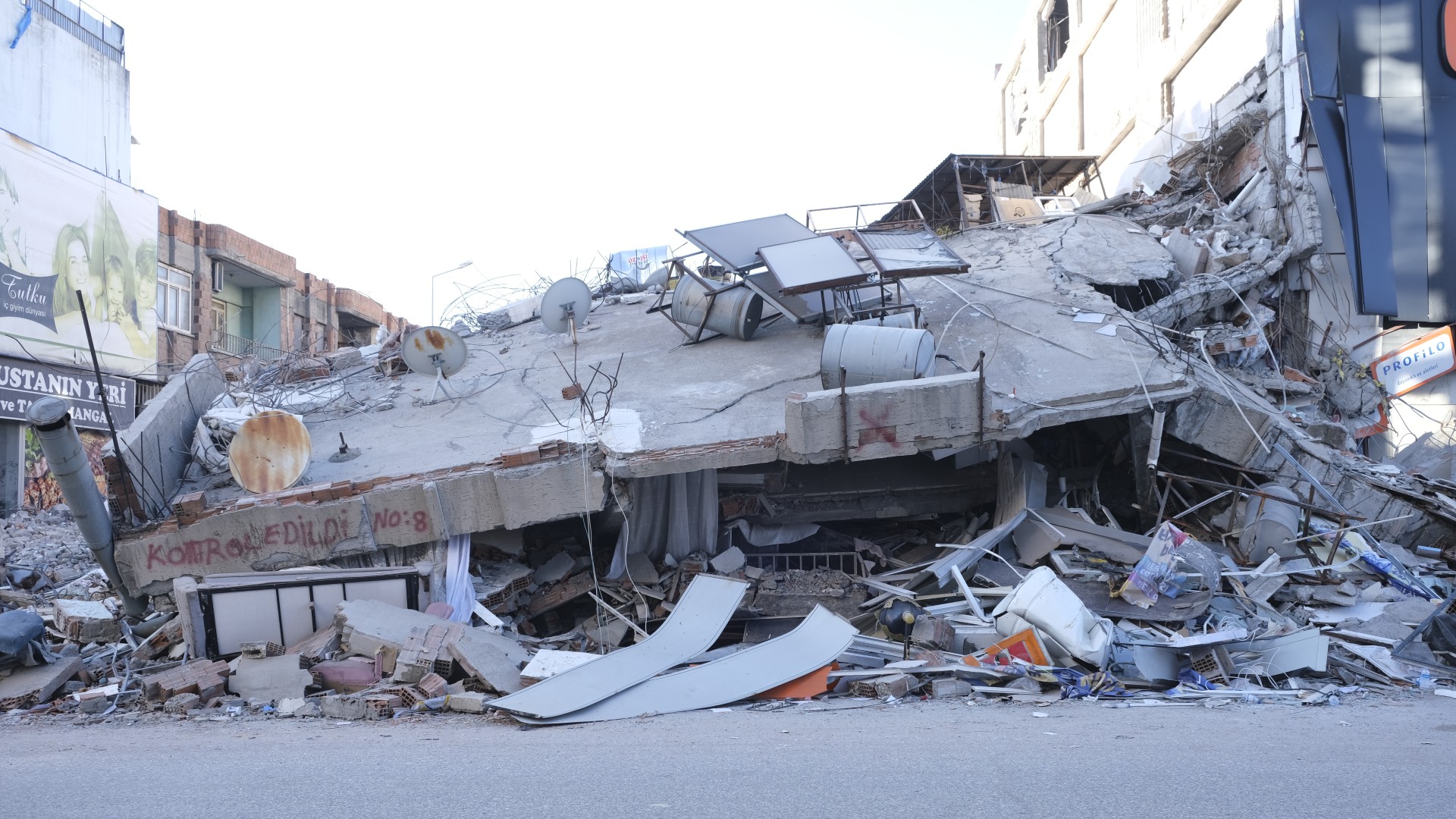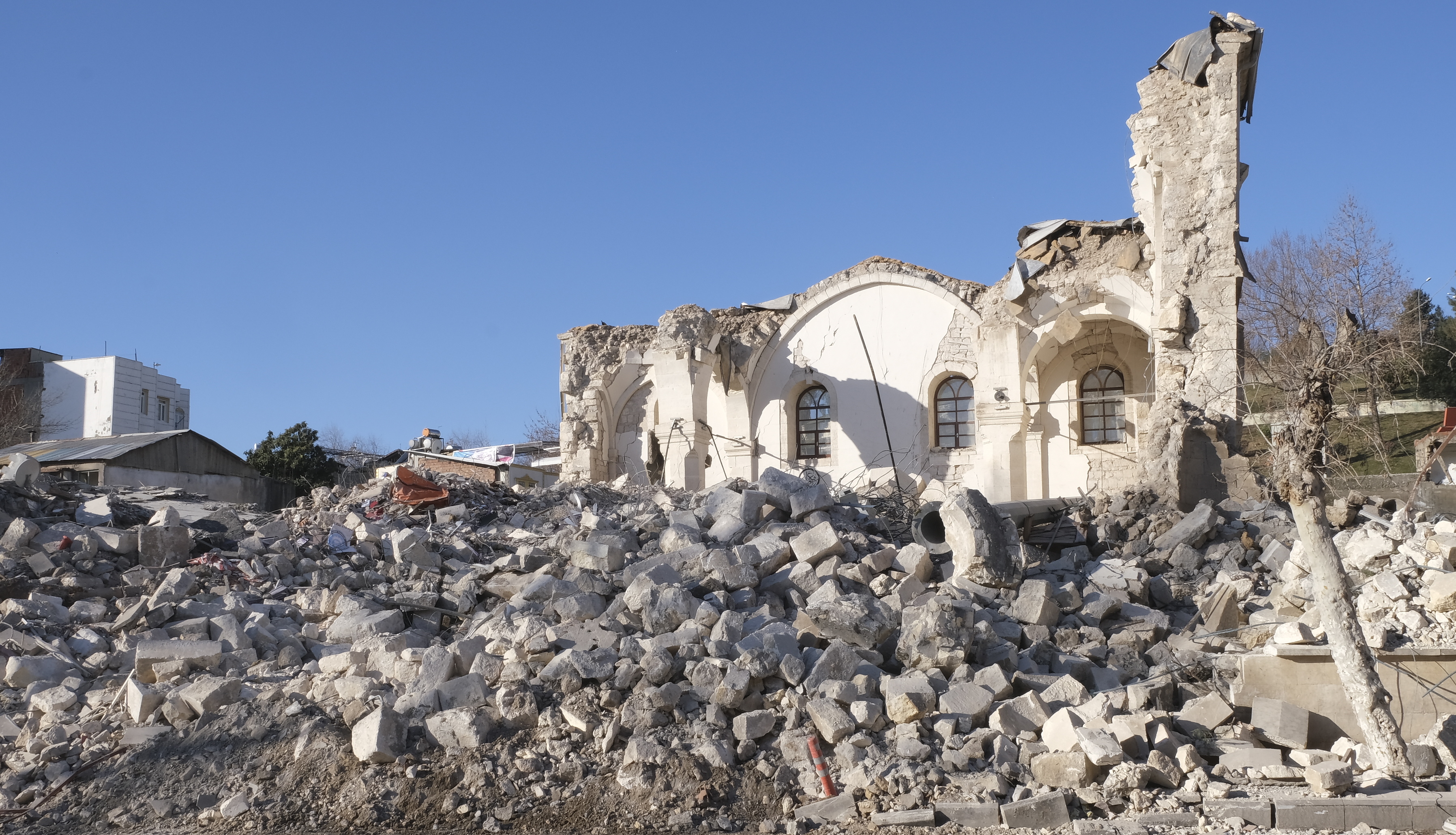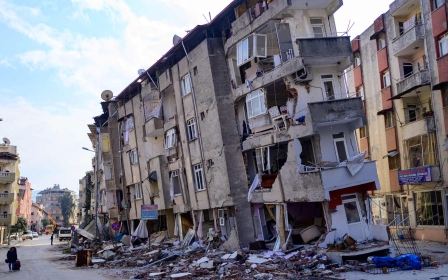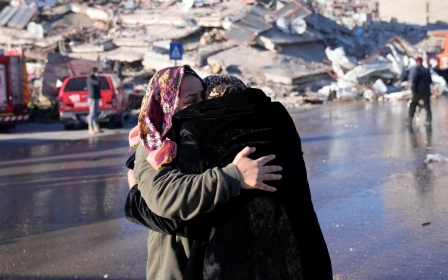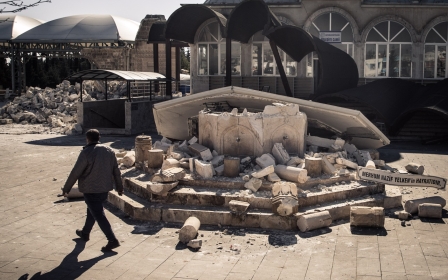Turkey earthquake: Time stands still in Adiyaman but anger grows over slow response
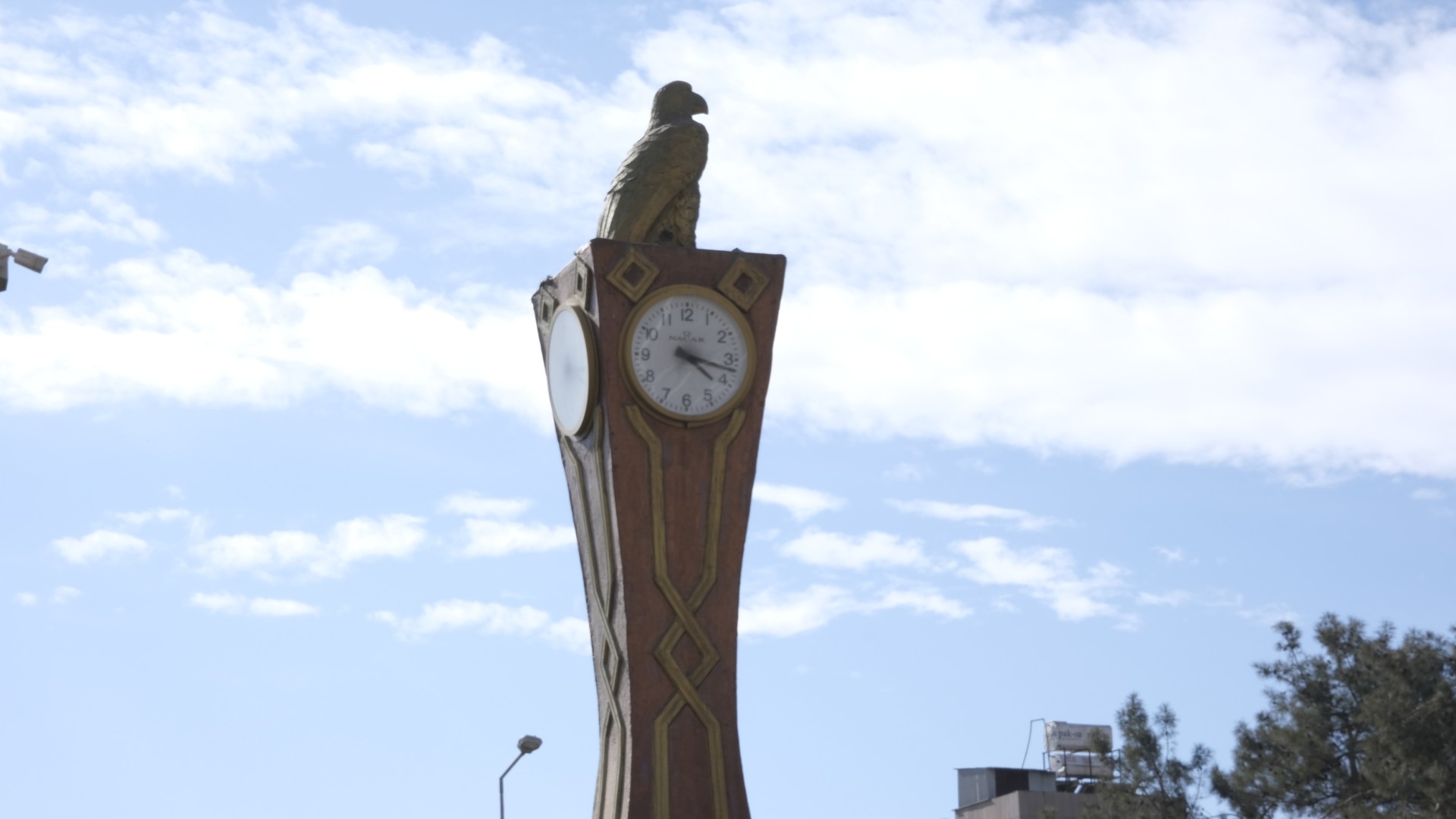
Adiyaman's still-standing clock tower has emerged as an iconic image following last week's devastating earthquake after it froze at exactly 04:17, the moment the first tremor hit.
This once bustling Turkish city, which sits near the East Anatolian fault-line, was devastated beyond recognition after twin earthquakes and thousands of aftershocks levelled building after building on 6 February, trapping thousands of residents who were asleep at the time.
The biggest earthquake to strike Turkey in eight decades also wreaked new devastation in northwest Syria, an impoverished region that provides the last pocket of sanctuary for the opposition that rose up against President Bashar al-Assad's authoritarian government 12 years ago.
'They [the government] assign incompetent people to important positions and then they ask why did things fail?'
- Mehmet Demirbay, survivor
More than 41,000 people have been killed in both countries and officials say the death toll is likely to rise.
Meanwhile, against all odds, people are still being pulled alive from the wreckage of their homes. The Turkish National Defence Ministry released a video on Wednesday showing a 77-year-old woman being rescued in the city, more than 212 hours after the last quake struck.
New MEE newsletter: Jerusalem Dispatch
Sign up to get the latest insights and analysis on Israel-Palestine, alongside Turkey Unpacked and other MEE newsletters
But with millions rendered homeless and forced to sleep in tents, cars or in mosques, anger is growing among the victims over the time it took to receive help.
Many are furious that they didn't see rescue teams until two or three days after the quake, when the window for survivors to be saved was shrinking fast. Chaos then followed, they say, as those that arrived, both Turkish and international, quickly left, some lacking the necessary equipment to extract survivors.
A smile triggers anger
In downtown Adiyaman, several residents told Middle East Eye that while the central government deserved its fair share of criticism, they were mainly furious with the leadership of one man in particular: Governor Mahmut Cuhadar.
A day after the quake hit, several residents went to Cuhadar's office to ask why aid and rescue crews had failed to arrive.
It's unclear what transpired next but at some point during the heated conversation, the governor raised a smile. Since then, the city has been seething with rage.
At one point last week, when Cuhadar and the Minister of Transport Adil Karaismailoglu went to visit grieving families, they were forced to hastily leave after angry citizens began hitting their vehicles.
"I have lost many relatives, there is nothing we can now do about it, but how the hell he can smile? Why the hell didn't he rush to rescue people?" local resident Turan Usta told MEE.
Another person interjected and claimed that President Recep Tayyip Erdogan was misled by the governor during his visit to the city last week.
"Erdogan came here. But they [the governor and other officials] did not let him see the city centre. They took him to a neighbourhood which was fine," he added.
MEE reached out to Cuhadar's office for comment but did not receive a response by the time of publication.
Erdogan has acknowledged some initial problems with the country's response to the disaster, but has maintained that no government could be ready for an earthquake of this magnitude.
So far, authorities have detained 134 contractors, architects and engineers connected to the thousands of collapsed buildings in 10 of the worst affected provinces.
One of the detained was Mehmet Yasar Coskun, the contractor who built Ronesans Residence, a destroyed building in the southern Turkish province of Hatay's capital, Antakya, who was detained at Istanbul Airport. He said in a statement he had followed all laws and building codes in constructing the apartment building.
The blame game
Standing near the rubble of a nearby devastated building, a Turkish man - made homeless by the quake - lashed out at the political recriminations and ensuing blame game.
"I've lost 45 relatives. I've seen my nephew's dead body with his bones spilled everywhere. Now, you want to talk about politics?" the man who refused to give his name said.
'I've lost 45 relatives. I've seen my nephew's dead body with his bones spilled everywhere. Now, you want to talk about politics?'
- Adiyaman resident
As families perched themselves on curbs, rooftops and nearby rubble to watch excavators claw through the concrete, some noted that even the United States had botched responses to natural disasters such as Hurricane Katrina in 2005.
"The problem is not confined to Adiyaman. It is a chronic problem in Turkey. They [the government] assign incompetent people to important positions and then they ask why did things fail?" Mehmet Demirbay, a teacher in Adiyaman told MEE.
Living in his car for the past 10 days, Demirbay said problems associated with rescue efforts were deeply rooted and it was pointless to single out the governor for blame.
"We live on a fault line, but we have tall buildings. The state would not have overcome this disaster.
"Governorate and municipality staff were also victims of the earthquake. How can you ask someone to come and drive an ambulance while his/her relatives are under the rubble?"
With hope fading for those still trapped under the rubble, Mustafa Cangoz said frustration was growing among many of the city's residents over what the future would hold.
While the Turkish government has set up areas where displaced residents can live and receive food and other supplies, many didn't have access to potable water or access to clean toilets.
"We don't have water, we can't go to the toilet, we can't bathe and we don't know when it will come," he told MEE.
"We don't know if these people [foreign aid workers] will remain for months until we go back to our normal lives. I'm afraid."
Middle East Eye delivers independent and unrivalled coverage and analysis of the Middle East, North Africa and beyond. To learn more about republishing this content and the associated fees, please fill out this form. More about MEE can be found here.


